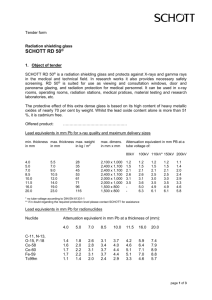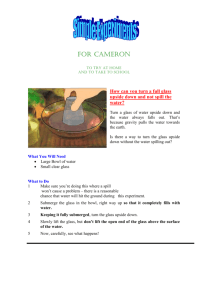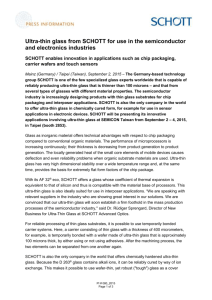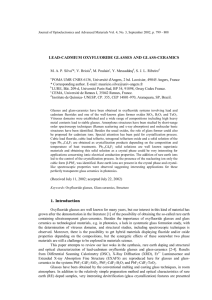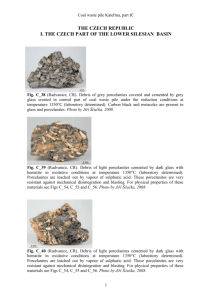Additions and corrections The versatile colour gamut of coatings of
advertisement
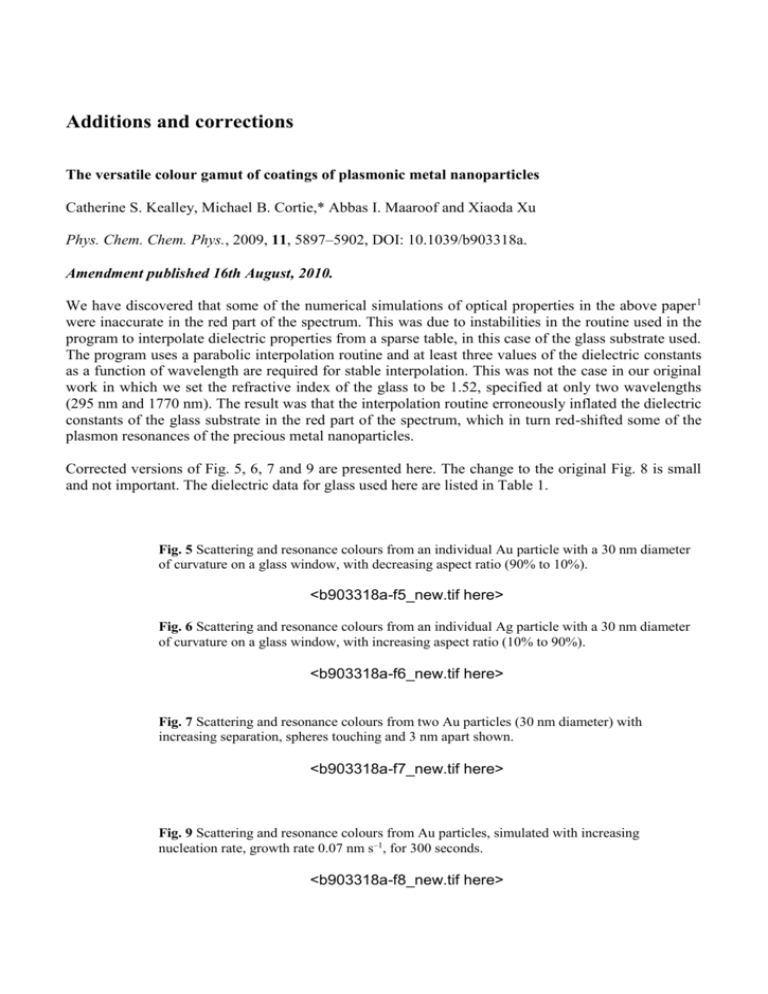
Additions and corrections The versatile colour gamut of coatings of plasmonic metal nanoparticles Catherine S. Kealley, Michael B. Cortie,* Abbas I. Maaroof and Xiaoda Xu Phys. Chem. Chem. Phys., 2009, 11, 5897–5902, DOI: 10.1039/b903318a. Amendment published 16th August, 2010. We have discovered that some of the numerical simulations of optical properties in the above paper 1 were inaccurate in the red part of the spectrum. This was due to instabilities in the routine used in the program to interpolate dielectric properties from a sparse table, in this case of the glass substrate used. The program uses a parabolic interpolation routine and at least three values of the dielectric constants as a function of wavelength are required for stable interpolation. This was not the case in our original work in which we set the refractive index of the glass to be 1.52, specified at only two wavelengths (295 nm and 1770 nm). The result was that the interpolation routine erroneously inflated the dielectric constants of the glass substrate in the red part of the spectrum, which in turn red-shifted some of the plasmon resonances of the precious metal nanoparticles. Corrected versions of Fig. 5, 6, 7 and 9 are presented here. The change to the original Fig. 8 is small and not important. The dielectric data for glass used here are listed in Table 1. Fig. 5 Scattering and resonance colours from an individual Au particle with a 30 nm diameter of curvature on a glass window, with decreasing aspect ratio (90% to 10%). <b903318a-f5_new.tif here> Fig. 6 Scattering and resonance colours from an individual Ag particle with a 30 nm diameter of curvature on a glass window, with increasing aspect ratio (10% to 90%). <b903318a-f6_new.tif here> Fig. 7 Scattering and resonance colours from two Au particles (30 nm diameter) with increasing separation, spheres touching and 3 nm apart shown. <b903318a-f7_new.tif here> Fig. 9 Scattering and resonance colours from Au particles, simulated with increasing nucleation rate, growth rate 0.07 nm s–1, for 300 seconds. <b903318a-f8_new.tif here> Table 1 Refractive index, n, of Schott ‘B270 Superwite’ glass, from website of Schott glass company2 Wavelength/μm (vacuum) n 0.30 0.32 0.34 0.36 0.38 0.40 0.42 0.44 0.46 0.48 0.50 0.52 0.54 0.56 0.58 0.60 1.517 1.562 1.562 1.548 1.539 1.535 1.534 1.535 1.534 1.530 1.528 1.527 1.526 1.524 1.523 1.522 Wavelength/μm (vacuum) n 0.62 0.64 0.66 0.68 0.70 0.72 0.74 0.76 0.78 0.80 0.82 0.84 0.86 0.88 0.90 1.522 1.521 1.520 1.520 1.519 1.519 1.518 1.518 1.517 1.517 1.517 1.516 1.516 1.516 1.515 The text of the paper remains correct and unchanged except as follows: Section 3.2.1 Aspect ratio of particles on glass Change ‘The range of colours available from Ag, Fig. 6, is even wider than that of the Au particles’ to ‘The range of colours available from Ag, Fig. 6, is broad and includes pink and yellow.’ References 1. C. S. Kealley, M. B. Cortie, A. I. Maaroof and X. Xu, Phys. Chem. Chem. Phys., 2009, 11, 5897– 5902. 2. Specification PCE - TKT B 270 Superwite, 2nd May 2000, Schott Desag, http://www.naugatuckglass.com/downloads/B270.pdf The Royal Society of Chemistry apologises for these errors and any consequent inconvenience to authors and readers. Additions and corrections can be viewed online by accessing the original article to which they apply.


